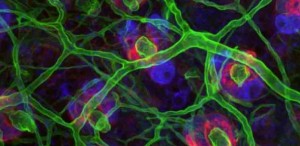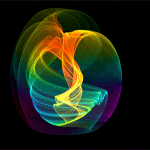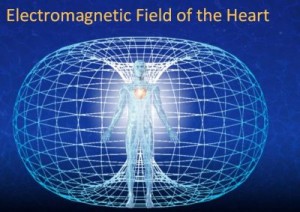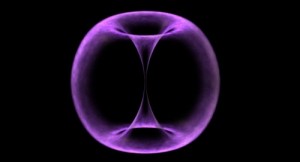Theme for Weekend # 2. An Introduction to Anatomy and Kinesiology
Class begins with: Heart Field Meditation,
followed by Dan Siegel’s Hub of Awareness Meditation
Sutras Studies: review I-1 to I-16, and II 46 – 48. Get a feel for basic vocabulary. Find a sutra or two you can work with practically.
Asana practice: Continue to refine energy flow from heart to feet, into earth/ground, and back up through core. Special attention to standing poses and dog pose. Refine action of feet, ankles, knees and hip joints to relieve unnecessary stress on spine and, using DFL as guide, track through all axes of movement through hips. Become more clear on the three basic movements of the pelvis and the femurs: saggital flexion and extension (forward and back bending); lateral  flexion/extension or ‘fish body’ as seen in trikonasna, ardha chandrasana and parsvakonasana; and rotation or twisting as in revolved half moon, revolved triangle and side angle and parsvottanasana.
flexion/extension or ‘fish body’ as seen in trikonasna, ardha chandrasana and parsvakonasana; and rotation or twisting as in revolved half moon, revolved triangle and side angle and parsvottanasana. 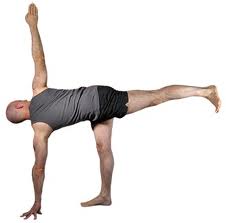 .
.
Main Theme: Somatic based spiritual practice requires an understanding of soma, the embodied expression of spirit. This weekend we will start with the obvious, muscles/bones/connective tissue structures. looking for ways to work holistically, and later in the course bring in the organs, physiology and the cellular levels of consciousness. But first, an overview from a yogic perspective.
In the Vedic tradition, human ‘anatomy’ consists of three nested bodies:
1. The gross body (Sanskrit: sthula sharira) is the body of mass and weight. It is tangible, and includes all structures from muscles and bones to cells, water and more. Our key word here is ‘stability’, sthira in Sanskrit. (sthira sukham asanam, PYS II-46)
2. The subtle or energy body (Sanskrit: sukshma sharira) includes the energies of the body such as heat, electricity, motility and motion, including the physiological and psychological processes of aliveness. It can be directly felt, but is not ‘tangible’ like the gross body. Neither is it separate from the gross body, as matter, as Mr. Einstein points out, is just a very dense form of energy. The key words here are flow and fluidity, or sukha, sukham in Sanskrit.
3. The causal body (Sanskrit: karana sharira), seed of all seeds: No perfect English translation but rainbow light body or the body of limitlessness can be useful. Another way to consider this ‘body’ is as the organizing intelligence of the cosmos, manifesting as fields: gravity, electromagnetic, strong and weak nuclear. The key words here are space, spaciousness and light.
For a yogi, kinesiology, the study of movement, is more important than anatomy. The main principle of kinesiology is known as joint congruence, which states that any joint, whether still or in motion, is most stable and safe when the center of one of the bones is exactly centered on the opposite bone. This is where alignment in yoga meets kinesiology. If my hip joint is aligned properly, the center of the femur head will remain exactly centered on the mid-point of the acetabulum of the pelvis throughout any healthy movement. This implies that all the muscles and muscle groups in the region are in balance throughout movement. An unhealthy movement will disturb the alignment by contracting one or more muscles asymmetrically and pulling the femur slightly off center. This will be felt as having a ‘tight hip’. As we build perception and begin to feel our way through the sensations, we can start to use simple movements to re-align the hip joints. Here the energy body and gross body work as one and we will start by moving in and out of the basic yoga poses. See Notes from St. John for details on working in the poses.
For our anatomical enquiry into the gross body structures, we will approach the muscles and bones from a holistic perspective, using as our primary reference “Anatomy Trains” by Tom Myers. Anatomy tends to be taught by learning/memorizing the body as a series of parts: muscles, bones, organs, nerves, etc. This approach totally misrepresents the reality of the human body which is a living, dynamic, integrated presence. We will use Tom’s work as a map to begin to see and feel the fascial continuities that link and integrate the layers and levels of the body in action and perception. Later on in the course, we will take a deeper look at four levels or layers of fascia: the pannicular or superficial fascia; the axial fascia with anterior and posterior compartments; the meningeal fascia and the visceral fascia.
The key Anatomy Train line for yogis is the ‘deep front line’, or DFL, which allows us to connect the myofascia of the muscles with the visceral fascia of the gut body, as it includes the diaphragm and pericardium. This line integrates the core of the body from head to feet and is the root of tadasana, our primary standing pose.
DFL, which allows us to connect the myofascia of the muscles with the visceral fascia of the gut body, as it includes the diaphragm and pericardium. This line integrates the core of the body from head to feet and is the root of tadasana, our primary standing pose.
1. Find the DFL origins in your feet. The heel bone is bypassed, so the gastroc/soleus muscles, which become the achilles tendon where it attaches to the heel, is not part of the action. Overusing these outer muscles is a habit that is difficult for beginner to overcome. Learn to be ‘on your toes’, which actually means to carry your weight on the tarsals and metatarsals with the heels very light. This allows instant movement in any direction and is the foundation for all skillful movements that begin with the legs. Watch a cat or dog as they move and notice their heels and wrists never touch the ground.
2. Feel the inner thighs awakening. We overwork the quads and hamstrings, neither of which are part of the DFL. The adductors can be taught to be engaged in trikonasana, parsvakonasana and ardha chandrasana. They are the ‘mediators of the legs, the muscles in the middle that bring a balanced energy flow. Find this. Repeat. Again.
3. The iliopsoas is a major player in the DFL’s healthy functioning, but these muscles tend to be overly contracted and isolated from the legs. Most lower back issues stem from this dissociation. By learning to slowly move in and out of the standing poses such as uttanasana and trikonasana, without collapsing the upper torso, we can begin to reconnect the psoas muscles with the rest of the DFL in the legs. Ida Rolf, pioneer somatic innovator described the psoas as linking walking and breathing, as the diaphragm is the next section of the DFL to be integrated. Moving in and out rather than holding brings the breath more clearly into focus. Most beginners ‘hold’ their breath if they are ‘holding’ a yoga pose. This is an unconscious habit that needs to be transformed asap.
4 Diaphragm: He we find a huge muscle dividing abdomen from chest cavity, attaching to ribs, spine, heart. It has opening for the blood vessels and esophagus, but is pretty strong and relatvely unconscious. Our work in exploring the breath will help differentiate ribs from diaphragm and learn to recognize the pressure cavities that play a major role in the shape they take on. Most important is to feel an upward lift to the lower dome of the diaphragm coming up from the feet. The diaphragm should ride on the aliveness of the feet through the integration of the DFL.
Now Into Skull and Upper Limbs: As the diaphragm receives support from below, the intercostals can awaken and support the ribs from the inside. this then relieves pressure on the scalenes from trying to hold up the front ribs. The shoulders can also relax and the arm connections through the blood vessel highways can now be felt. Hands can connect directly to the feet, head to the tail.
From the awakening and refining of the DFL, we can see the role of some of the other Anatomy Train Lines. The Superficial Back Line, or SBL, and the Superficial Front Line, or SFL, work as a pair when integrated with the DFL. In a forward bend such as uttanasana, the SBL lengthens if the DFL maintains its core support and low. In a backbend, the SFL lengthens, again if the DFL is supporting. Notice the SFL breaks at the pelvis. The quads need to lengthen for everyone. They chronically over work. The upper SFL is trickier as the abdominals are often weak and the inner muscles of the chest wall to tight. There needs to be two differetn action for most beginning students to fully open the SFL.
The lateral lines, right and left, are opened in the lateral poses like trikonasan, parsvakonasana and ardha chandrasana, again with support form the DFL.
The spiral lines can be explored in standing twists, using the support of a wall for extra clarity.



